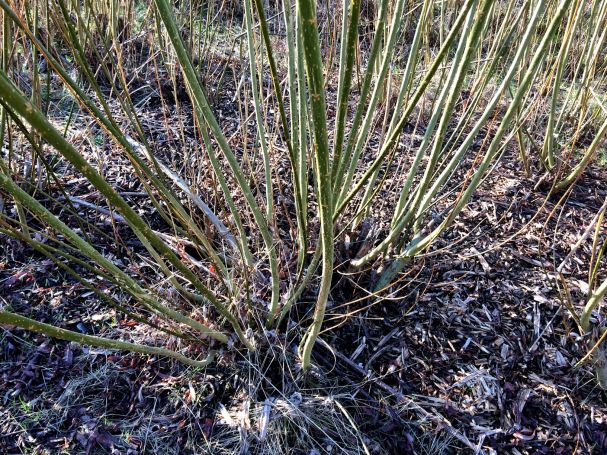
Heading back home through Grantchester recently, I noticed that the Willow field near Byron’s Pool has grown up well over the last year.

Roughly 11 hectares of willow are managed here by Short Rotation Coppicing, with, as a rule, half the crop cut every second year. However, flooding from the River Cam can limit access and upset the routine.

I’d (somewhat romantically) assumed the poles to be used in gardening and willow-weaving projects, but in fact the crop is chipped, dried and used in local biomass boilers.

According to the farm website (Trumpington Estate), they produce ~120 tonnes of willow woodchip annually from the field. They expect the trees to last ~20 years before they need to be replaced.

For interest, I am including a couple of photos taken by Hugh Venables which show the willows in leaf (taken in June 2014) …

And cropped (dated April 2015)
It’s good to see efforts to use sustainable and renewable resources for the biomass boilers.
This probably generates a small amount of revenue for the estate as well, do you think?
Paz
As far as I can see on their website, they have specifically built boilers their land to use the biofuel for their own heating. I imagine that they don’t have too much (any) left over to sell on, but I bet their heating bills have shrunk!
Interesting to see a biomass production. Although promising, for some reason, there is resistance to building a plant here. We are awash in biomass!
Lol, the National Trust at Ickwork (http://www.robertturnerassociates.co.uk/portfolio/ickworth/) has installed such heater to stop using oil, which is good to see.
Very interesting the comments about biomass. Recent newspaper article series about the biomass that is produced here in North Carolina (USA) made in to pellets and shipped to Europe. Used to power large electricity power plants. Lots of discussion about how ‘green’ that really is…. I remember when living in Italy, buying pellets for our stove that were from Canada and wondering that smae thing.
And I agree it would be nice to see all those supple canes made into fences or furntiure or…
Yes, some of the stuff we send round the globe seems very counterproductive. Fortunately those mentioned are local projects, but I’d been wondering recently myself about increasingly popular bamboo substitutes for plastic (e.g. in socks, plant pots, coffee cups and toilet paper), which sound good in principal, but in the same way isn’t exactly a local resource.
Pingback: Wordless Wednesday – Byron’s Pool, Cambridge: A Literary Walk | Frogend dweller's Blog